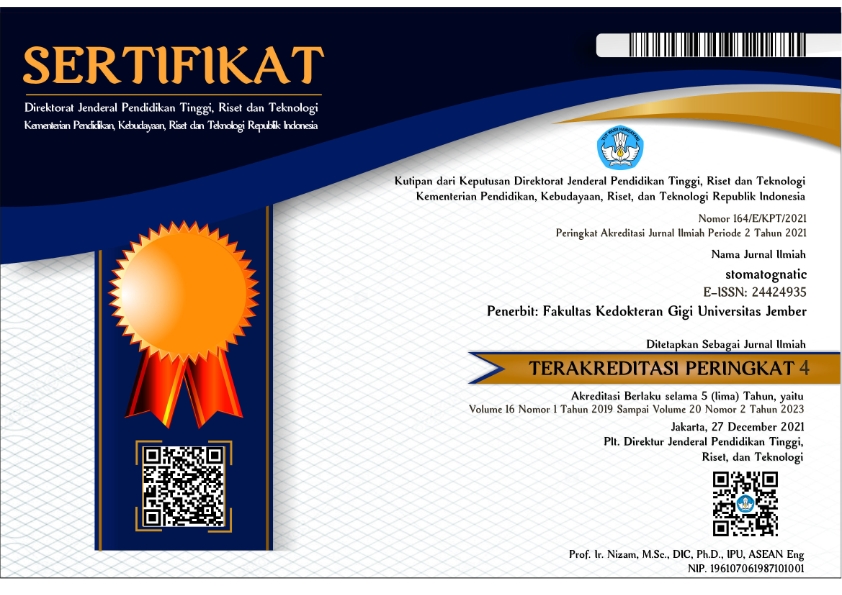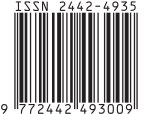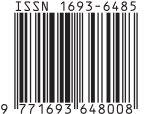CORROSION RATE OF TITANIUM ORTHODONTIC WIRE AFTER IMMERSION IN ARTIFICIAL SALIVA
Abstract
Various types of metallic orthodontic wire and brackets stainless steel, cobalt-chromium-nickel alloy, nickel-titanium alloys, beta-titanium alloy are use in the treatment of malocclusion. For correct of orthodontic appliance one must have a thorought knowledge of the material from wich these appliance are made. The mechanical and physical properties of these materials change greatly under variying condition of manipulation.These metals undergo chemical or electrochemical reactions with the oral enviroment resultilting in disssolution or formation of chemical compounds. Under several situations thr oral enviroment is highly aggresive and leds to corrosion. An in vitro study to measure the behavior of corrosion on Beta III Ti and CNA orthodontic archwire has been done. The aim of this study was to calculated the corrosion rates of orthodontic archwire. The rectangular 0.017x0.025 Beta III Ti (3M Unitek) dan CNA (OrthoOrganizer) were used in this study. To measure the corrosion rates the weight loss and planed interval test method has been used. Data was tasted and analized using Between Subjects Effectc and Multiple Comparation test .. The result show the corrosion rates of CNA was higher than Beta III Ti.
Published
2015-12-15
How to Cite
AP, Leliana S Devi.
CORROSION RATE OF TITANIUM ORTHODONTIC WIRE AFTER IMMERSION IN ARTIFICIAL SALIVA.
STOMATOGNATIC - Jurnal Kedokteran Gigi, [S.l.], v. 7, n. 1, p. 56-61, dec. 2015.
ISSN 2442-4935.
Available at: <https://jurnal.unej.ac.id/index.php/STOMA/article/view/2021>. Date accessed: 24 nov. 2024.
Issue
Section
Articles







